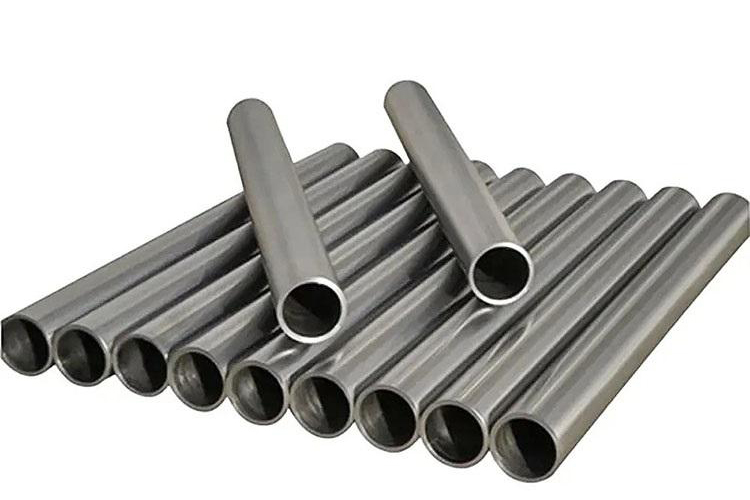Case Study: Stanford Advanced Materials' Precision-Customised Tantalum Tubes
Introduction
Stanford Advanced Materials (SAM), a trustworthy supplier of high-performance metals, recently assisted a customer who required ultra-high-precision tantalum tubes for use in a specific application. The application necessitated extremely small sizes, ultrathin thickness, etc. SAM delivered workable solutions via detailed technical communication with stringent standards for manufacturing and safe packaging.

The Challenge
The customer approached SAM with three main technical requirements:
- Custom Size Feasibility – The client specified the minimum size at which a 2 mm OD × 1.4 mm ID × 4 mm L tantalum tube could be produced without expanding tolerances beyond specifications.
- Minimum Wall Thickness Capability – The client requested the lowest wall thickness possible without compromising structural integrity.
- Inner Wall Roughness Control – They also queried whether SAM could manage the inner surface finish.
The Solution
SAM's technical personnel responded with detailed and relevant answers:
- Shortest Custom Length – For 2 mm OD × 1.4 mm ID tantalum tubing, the shortest custom length possible is 20 mm. Anything shorter could compromise bending or dimensional integrity during manufacture.
- Minimum Wall Thickness – SAM is capable of achieving wall thickness as low as 0.2–0.25 mm on 3.4 mm OD tubes, down to an inner diameter of Φ2.9–Φ3.0 mm. This is at or slightly above the maximum for stable production in tantalum.
- Inner Wall Roughness – Although normal mechanical machining produces a relatively rough inner wall surface, SAM can enhance surface finish through optional secondary operations such as precision reaming or chemical polishing.
The Results
The consultation led to significant findings:
- Definite Technical Limits – The customer received exact values regarding shortest length, wall thickness limitations, and achievable surface roughness.
- Flexible Surface Finish – SAM provided various finishing capabilities, enabling the customer to make cost versus performance trade-off decisions.
- Packaging & Transport – SAM employs specialised cases and anti-vibration inserts to protect thin-walled tubes during transport. Each order undergoes visual inspection and is moisture protected prior to packaging in export-quality cartons.
What Are Tantalum Tubes?
Tantalum tubes are cylindrical, hollow components made of high-purity tantalum, a refractory metal with a melting point of 3,017°C and a density of 16.6 g/cm³. They are appreciated for their exceptional corrosion resistance — even against highly aggressive acids such as hydrochloric and sulphuric acid — and mechanical stability at extreme temperatures. Tantalum is one of the few metals that forms a protective oxide coating which shields it from chemical attack, making it a suitable metal for extended use in extreme chemical and biomedical environments.
Methods of production for tantalum tubes include extrusion, deep drawing, welding, and precision machining. Seamless tubes maintain uniform strength throughout their length, while welded tubes can be manufactured in larger diameters. In small high-precision component production, mechanical machining or EDM (electrical discharge machining) is employed. Dimensional ranges vary significantly: outer diameters (OD) range from 1 mm to over 50 mm, wall thicknesses start from as low as 0.2 mm, and lengths can be from short sections below 20 mm to continuous tubing exceeding 1 metre.
Applications of Tantalum Tubes
Tantalum tubes are utilised in environments where corrosion, high temperature, or bioreactivity failure is unacceptable. Typical applications include:
- Chemical Processing – Reactor linings, acid distribution lines, and heat exchangers in HCl, H₂SO₄, or HF-processing facilities. Tantalum may outperform titanium, zirconium, and nickel alloys in these environments, reducing downtime for maintenance.
- Electronics – High-performance capacitor anodes, semiconductor sputtering targets, and shielding for sensitive circuits.
- Medical – Orthopaedic and dental implants, stents for vascular applications, and surgical tools. Biocompatibility minimises the risk of adverse reactions upon implantation in the human body.
- Aerospace and Defence – Fuel system components for high-temperature, rocket nozzle liners, and sensor-sensitive sheathing for high-radiation applications.
- Laboratory and Research – Vacuum system tubing, corrosive media sample holders, and specialised reaction vessels.
What Are Precision-Customised Tantalum Tubes?
Precision-customised tantalum tubing is engineered to meet specific customer specifications where off-the-shelf items do not suffice. Customisation may involve extremely close tolerances, slender wall thickness, or high surface finish, or special dimensional requirements to enable integration into complex assemblies.
Stanford Advanced Materials offers tantalum tubing solutions tailored to precise dimensions, tolerances, and performance specifications. The materials are manufactured to international standards ensuring consistent and reliable quality. Additionally, customers benefit from access to SAM's technical expertise, with guidance based on actual production capabilities and application needs.
Conclusion
SAM leverages technical expertise and collaboration to manufacture precision-fabricated tantalum tubes to exact specifications. From defining dimensional parameters to advising on surface finish feasibility, SAM ensures customers receive not only products but complete technical solutions.

 Bars
Bars
 Beads & Spheres
Beads & Spheres
 Bolts & Nuts
Bolts & Nuts
 Crucibles
Crucibles
 Discs
Discs
 Fibers & Fabrics
Fibers & Fabrics
 Films
Films
 Flake
Flake
 Foams
Foams
 Foil
Foil
 Granules
Granules
 Honeycombs
Honeycombs
 Ink
Ink
 Laminate
Laminate
 Lumps
Lumps
 Meshes
Meshes
 Metallised Film
Metallised Film
 Plate
Plate
 Powders
Powders
 Rod
Rod
 Sheets
Sheets
 Single Crystals
Single Crystals
 Sputtering Target
Sputtering Target
 Tubes
Tubes
 Washer
Washer
 Wires
Wires
 Converters & Calculators
Converters & Calculators
 Write for Us
Write for Us
 Chin Trento
Chin Trento



